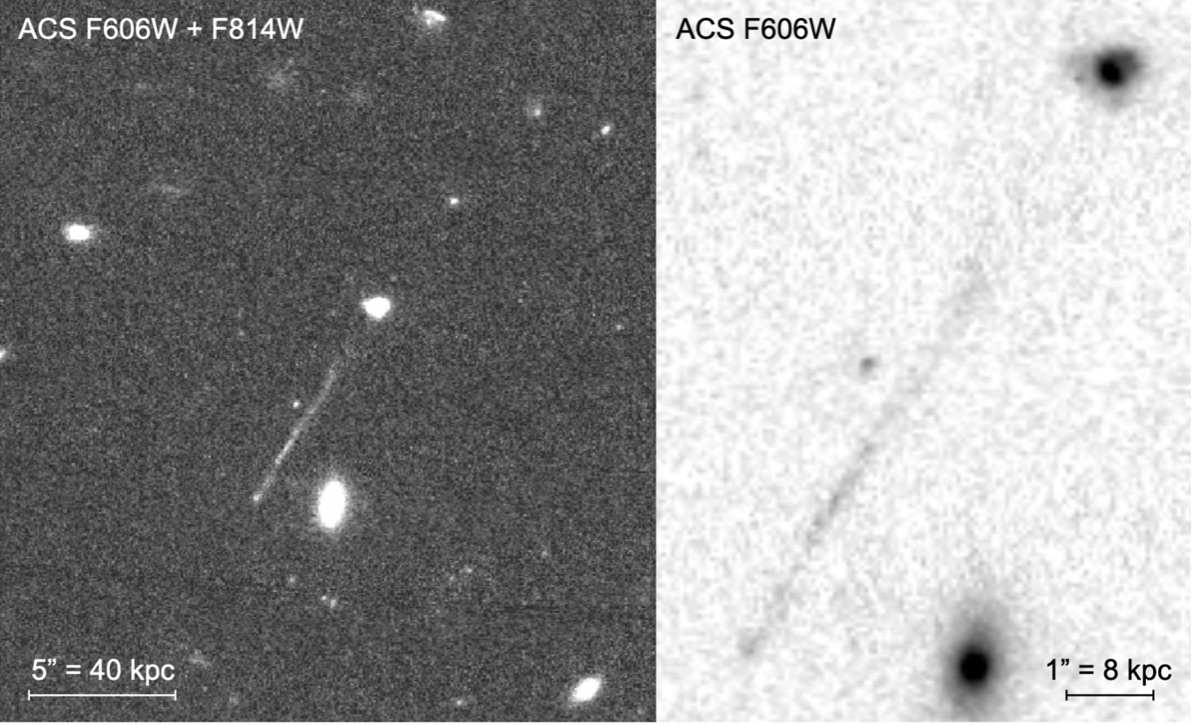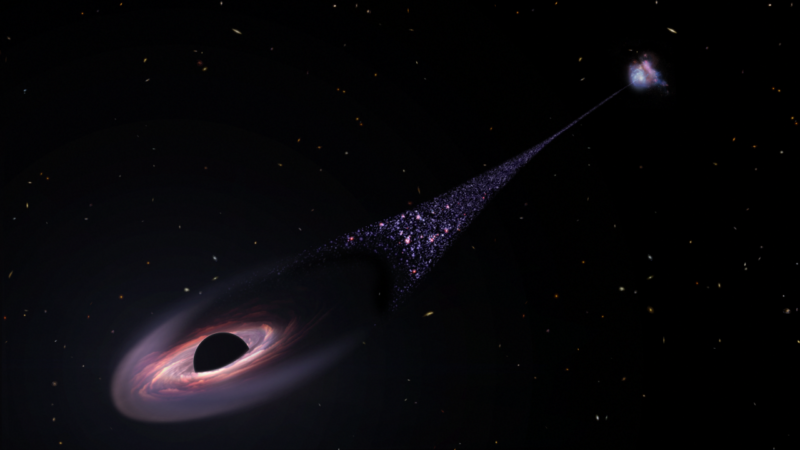If you saw a similar streak in one of your photos, you'd probably take a few moments to clean off the lens. But the streak, in this case, was in an image taken by the Hubble Space Telescope, which is not affected by the schmutz that daily life leaves on Earth-bound hardware. So, a team of researchers decided to figure out what the long, thin smear might represent.
They're still not certain, but the best explanation appears to be the wake left behind by a supermassive black hole that's been shot free of the galaxy that used to host it. Its liberation likely resulted from two additional supermassive black holes, all brought together by a merger of galaxies. If this is right, it'll be the first instance of this behavior we've ever seen.
What is that?
Back in the days of film cameras, when it was sometimes possible to go months or even years between taking a photo and getting it developed, it wasn't unusual to pick up your newly developed snapshots and find yourself wondering what it was you had taken a picture of. You can almost hear echoes of those days in astronomers' description of seeing the smear across one of Hubble's images: "an almost-straight, thin streak was readily apparent in a visual assessment of the data quality."
A close look revealed that the streak extended toward a somewhat odd-looking galaxy. "Not having encountered something quite like this before in our own images or in the literature, we decided to include the feature in the observing plan for a scheduled Keck [telescope] run."

Based on the redshift of light from the object, both it and the galaxy are roughly the same distance from Earth, suggesting that the two are related. The researchers estimate that the streak is about 200,000 light-years long. While the supermassive black holes at the center of galaxies can emit jets of material that long (and even longer), those jets tend to spread out as they get further from the galaxy. In this case, the streak remained thin throughout its entire length.
A look at the emission of the stars present in the streak suggests that, in general, the stars get younger as you move down the streak away from the galaxy. Putting everything together, it appears that the streak started forming about 40 million years ago, and its tip has been progressively moving away from the galaxy at about 1,600 kilometers a second since.
Old theories
One possible explanation for that movement is that the galaxy ejected a supermassive black hole. This is inevitable due to two observations: Almost all galaxies seem to have a supermassive black hole at their core, and most galaxies are built by multiple mergers. As a result, the supermassive black holes of the pre-merger galaxies will eventually run into each other. There are two ways this can lead to an ejection. One is that if two of these supermassive black holes undergo a merger where the production of gravitational energy is uneven, that can impart a directional kick to the post-merger product.
An alternative road to ejection occurs if one or more galaxy mergers happen in relatively quick (in astronomical terms) succession, it's possible that not all of their central black holes will have merged yet. In these cases, you can potentially have three or more of these giants looping around each other, allowing gravitational interactions to throw one out.



3175x175(CURRENT).thumb.jpg.b05acc060982b36f5891ba728e6d953c.jpg)
Recommended Comments
There are no comments to display.
Join the conversation
You can post now and register later. If you have an account, sign in now to post with your account.
Note: Your post will require moderator approval before it will be visible.